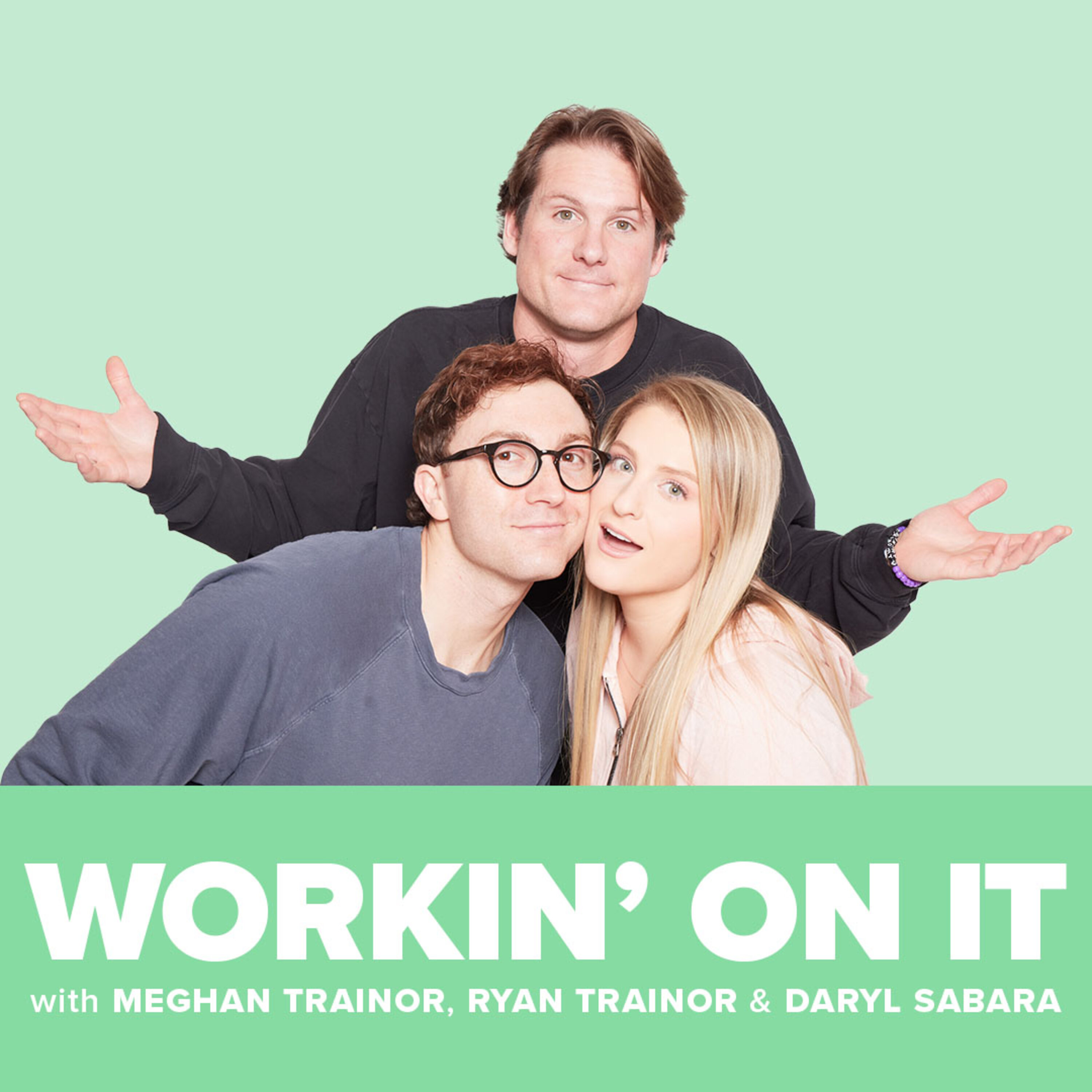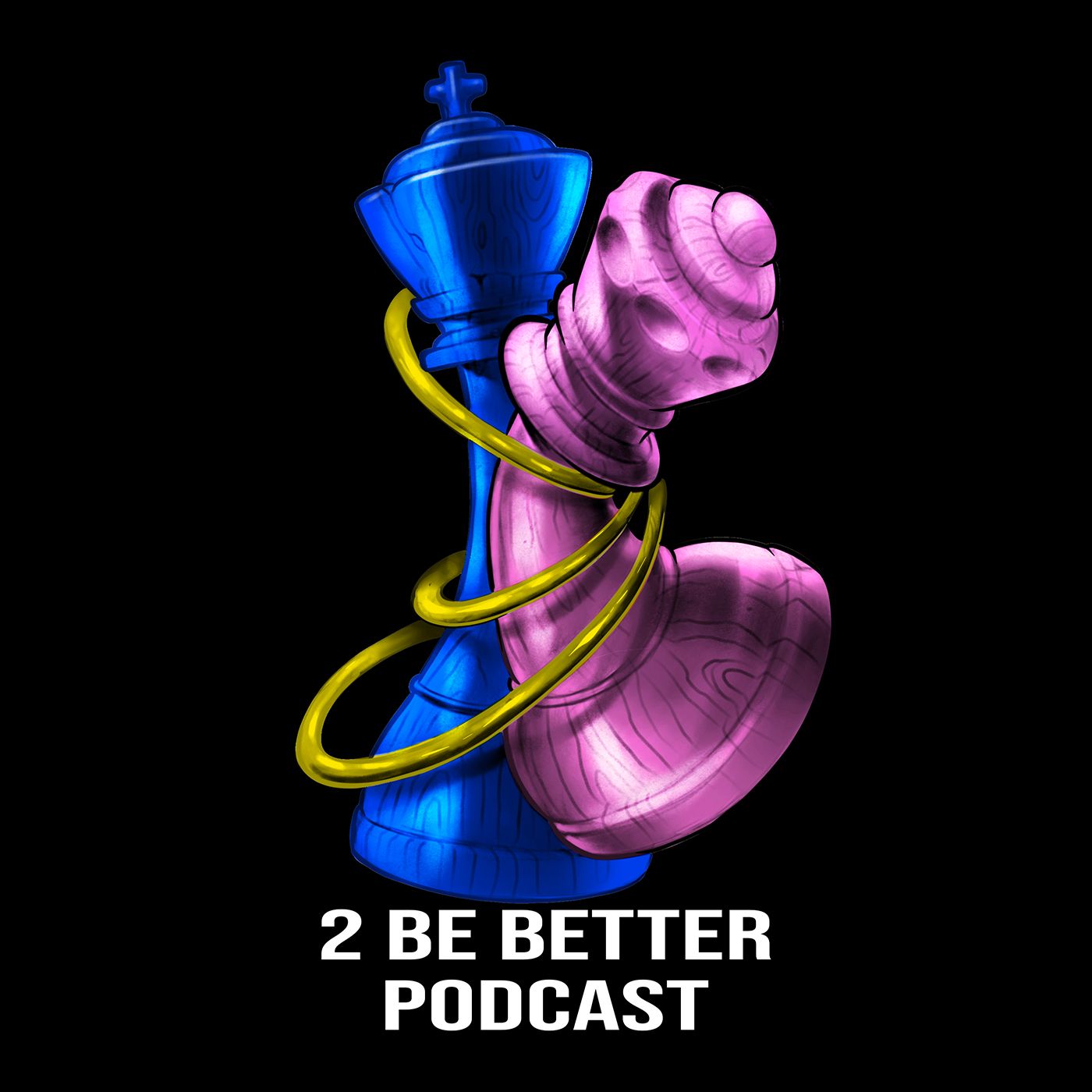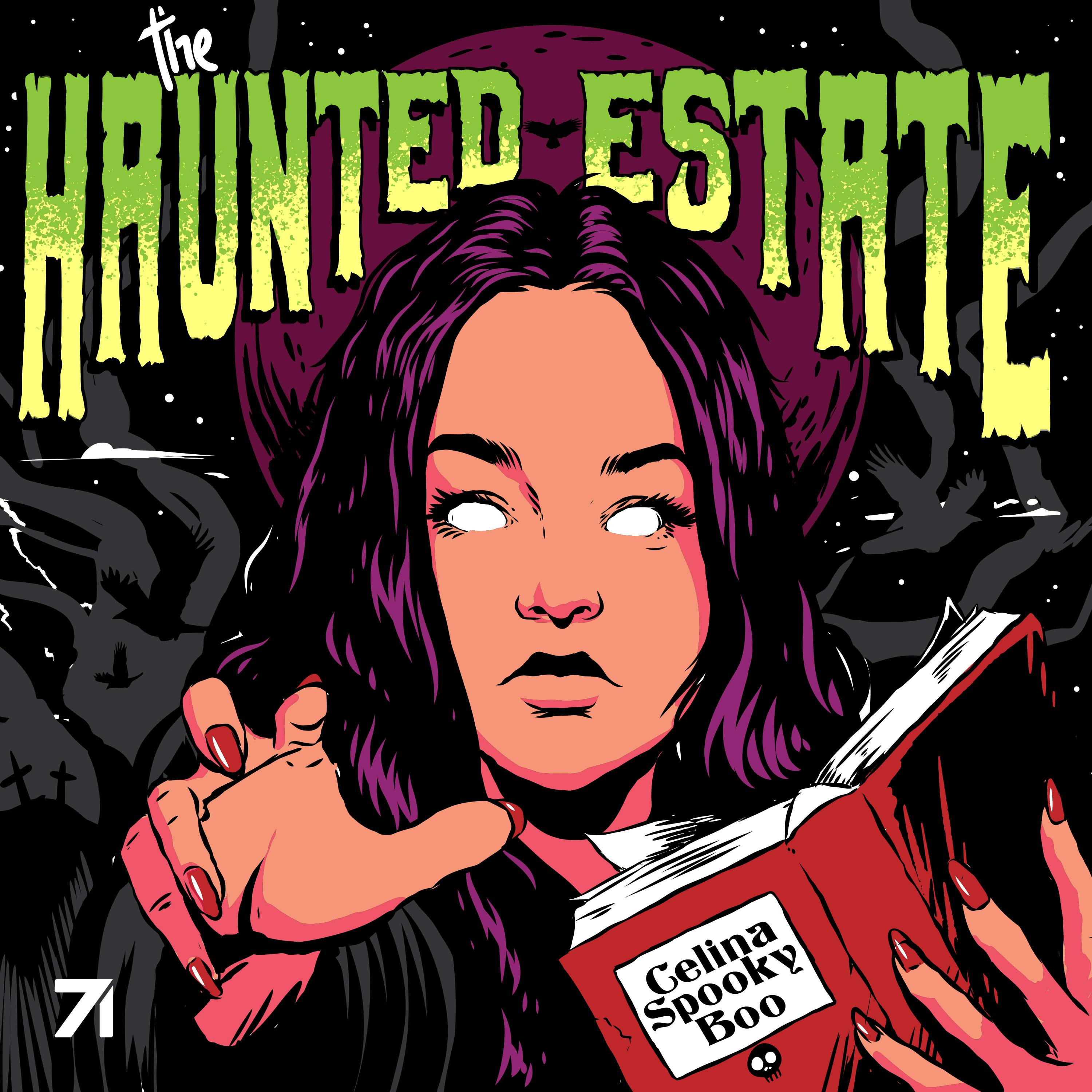
CeeCee’s Shenanigans
Welcome to CeeCee’s Shenanigans Podcast—where real life meets real laughs and raw truth.
Join host CeeCee and her rotating crew of co-hosts as they tackle everyday chaos with humor, heart, and a healthy dose of sarcasm. From the struggles of adulting to the ridiculousness of relationships, nothing’s off-limits. Because let’s be honest… adulting sucks. So why not laugh through it?
But there’s more to the story.
In her powerful new series, “Navigating the Uncharted”, CeeCee shifts gears to share her personal journey through rare autoimmune disease and chronic illness. With vulnerability and strength, she advocates for awareness, connection, and healing—building a community of warriors who know what it means to fight silently but fiercely.
Whether you’re here for the shenanigans or the soul-deep conversations, this podcast is your space to feel seen, supported, and maybe even snort-laugh along the way.
🧡 Real talk. Real stories. Real community.
CeeCee’s Shenanigans
"Navigating the Uncharted" Episode 1: 10 Days, 11 Units, 1 Awakening
In the premiere episode of Navigating the Uncharted, host CeeCee shares the gripping story of a 10-day hospital stay that required 11 units of blood transfusion and led to a life-altering awakening. What began as a sudden collapse quickly spiraled into a whirlwind of transfusions, consults, and unanswered questions. But amid the chaos, CeeCee found clarity—not just about her health, but about her purpose.
With raw honesty and emotional depth, CeeCee recounts the physical toll of her rare disease crisis and the emotional disorientation. She reflects on the vulnerability of being a patient who knows her body intimately but is still met with medical uncertainty. From rare blood to rare disease, each moment is layered with fear, resilience, and a growing sense of transformation.
This episode explores:
- 🏥 The reality of navigating complex care as a medically rare and invisible patient
- 💉 The emotional impact of multiple blood transfusions and constant clinical shifts
- 🧠 The mental strain of tracking your own care while your body is in freefall
- 💔 The grief of losing autonomy—and the unexpected grace that follows
But 10 Days, 11 Units, 1 Awakening isn’t just a medical memoir. It’s a story of spiritual reckoning. In the quiet moments between procedures and diagnoses, CeeCee began to listen—not just to her body, but to her Faith in Jesus. What emerged was a renewed commitment to advocacy, storytelling, and making the invisible.... visible.
Listeners will walk away with:
- A deeper understanding of rare disease and invisible illness experiences
- Insight into the emotional and logistical challenges of hospitalization
- Inspiration to advocate for themselves or loved ones in healthcare settings
- A sense of solidarity and connection through shared vulnerability
CeeCee’s storytelling is grounded in truth, clarity, and compassion. She doesn’t offer easy answers—she offers presence. This episode sets the tone for the series: unflinching, human, and deeply resonant.
Whether you’re a patient, caregiver, clinician, or simply curious about the human side of medicine, this episode invites you to witness the messiness of healing and the beauty that can emerge from brokenness.
Trigger Warning:
This episode contains descriptions of medical trauma and emotional distress. Listener discretion is advised.
🎧 Thanks for listening to CeeCee's Shenanigans & Navigating the Uncharted with CeeCee.
If this episode resonated with you, share it with someone who needs to hear it.
Subscribe, Rate, and leave a review to help others find the show!
Follow CeeCee on Instagram @CeeCeesShenanigansPodcast and @CeeCeesShenanigans on Facebook and TikTok for behind-the-scenes updates, resources, and real-time reflections!
MY HOOLIGANS!
How I’ve missed you soooo much!
We’re back with more Shenanigans and I don’t plan on leaving
again anytime soon!
(Extends prayers to all, wish them all well, and let them know
it’s okay to not be okay, and remind them this is the place
where we can all come together to feel our feelings together
& introduce this new series called “Navigating the Uncharted”)
This first episode may get emotional, so bare with me. Also, if
you’re unable to listen to scary or emotional medical trauma,
please turn this podcast off, and join us on the next episode.
Today, I’m taking you back to February 2024—a month that
started with a birthday celebration and slowly unraveled into
one of the scariest health spirals I’ve ever faced.
So, picture this: it’s the beginning of February. Mom’s
birthday rolls around—y’all know her as Momma Star—and
while we’re celebrating her, I start noticing something
strange. My brain feels like it’s swimming in molasses. Fatigue?
Off the charts. Headaches? So bad, I was basically glued to
the bed. It got to the point where my family started
whispering worries… thinking I might be slipping back into a
depressive spiral. But something told me—this wasn’t just
emotional.
Fast-forward to the week of Valentine’s Day. I upload episode
3 of this podcast—and even I could hear it in my own voice.
That spark was dimming. Editing that episode felt like
dragging myself through cement. It went up late, and I
remember thinking, “What is happening to me?”
Then came Friday the 23rd. I nearly took myself to the ER,
convinced I had a kidney infection. My urine was brick
red—like scary dark. Trent had just changed jobs, and we
were between insurances. So I called Momma Star, praying
our family doctor would run a self-pay urinalysis. Got it done,
went home… still battling anxiety and feeling rough.
Now here’s the kicker: two days later, on the 24th—my
goddaughter’s birthday—I get the call. The nurse says
nothing’s wrong with my urine. That I just need to drink more
water. Y’all. If you know me, you know I’m basically part fish.
Hydration is not my problem.
Still, I push through. Bring gifts, have a play date. But every
time I stand up or walk around, I’m dizzy. My sleep was trash.
My appetite disappeared. I figured maybe the sleep apnea was
flaring, or maybe I was just nutritionally depleted or getting
burned out from quitting my job and leaning into my art and
podcast hustle… but it didn’t add up.
And then—Tuesday hits. Full stop. I’m bedridden, y’all. Not
just tired—bone-deep fatigue. My joints ache. My head feels
like it’s trying to escape. I’ve got nausea, balance issues, even
fever so bad the bed’s soaking wet. Trent’s beside himself,
asking for pictures because I’m looking pale… maybe even
jaundiced.
That was the moment I knew—this was more than burnout.
Something was really wrong.
The next day, Wednesday morning, February 28th, around
6:30 a.m. when I woke up feeling like absolute dog poo. I had
to use the bathroom, but as I stood up, my body said, “Nope.”
I threw myself back to avoid collapsing but still hit the floor.
It took five exhausting minutes to crawl for my phone, but my
bladder was calling louder, and I somehow got to my feet.
I was gasping for air, shaking, and barely hanging on, but I
made it a few feet to the couch, caught my breath, then
pushed myself another stretch to the bathroom. Honestly, I
was shocked I hadn’t passed out—or worse—during it all.
Afterward, I realized I hadn’t eaten in over 24 hours. My
body needed something, anything, even with the nausea and
pain. I somehow made cereal, though I don’t remember the
process at all. What I do remember is looking at the mess,
giving it mental side-eye, and thinking seriously about leaving
it there with a big ol’ middle finger.
Instead, I cleaned up, breath by breath, couch stop by
counter pause, and finally made it back to bed—convinced I
might not wake up again. I literally thought, If it’s my time,
it’s my time. Someone will find me.
Around 10 a.m., still feeling like death warmed over, I
messaged Trent. He wanted me to go straight to the hospital.
I called on my sister-in-laws first, hoping to avoid dragging
Trent away from work. But after seeing my condition, they
told him to come home, and he did.
Truth is, I didn’t want to go yet. Trent’s new insurance kicked
in on March 1st, and I was doing everything I could to spare
him a mountain of medical bills. But this time… this time, my
body wasn’t asking permission.
By 2:30 p.m. that Wednesday, Trent wheeled me into the ER
at St. Thomas Midtown because I could barely get out of the
car on my own. I told intake everything: I was winded, weak, in
nonstop pain, and battling a headache that hadn’t let up for
over 72 hours.
They ran an EKG, which came back normal—but within 30
minutes I was in a room, getting blood drawn, a CT scan, and
an MRI. Then the bomb dropped.
My hemoglobin was at 4. For context, normal for women is
12–15. Four was fatally low. My spleen and liver were swollen,
my kidneys were showing signs of damage, and I was on the
brink of organ failure.
They began fluids and steroids immediately, and around 5:30,
the doctors circled back with a possible diagnosis: Hemolytic
Anemia. That’s when your red blood cells are being destroyed
faster than your body can replace them. And since red blood
cells carry oxygen, losing them meant my body couldn’t
breathe—literally or figuratively.
A few more labs narrowed it down to Warm Autoimmune
Hemolytic Anemia, a rare blood disorder where your own
immune system attacks your red blood cells… at normal body
temperature. My body was sabotaging itself—and it had been
quietly doing so for who knows how long.
(I’ve learned much more since then—genetic testing, specialist
insights—but we’ll get into that later. For now, we’ll stay
focused on this first diagnosis.)
That night is a blur. Poor Trent had a stomach bug and could
barely stand himself. My parents came the next day around
noon, and by then I’d had my first blood transfusion. We were
anxiously waiting to see how my body handled it.
Trent had to leave soon after—he ran to the bathroom to
throw up, and since the doctors considered me
immunocompromised, he needed to recover at home before
coming back. I spent the night barely aware of anything, being
woken every two hours for vitals. Sleep? Who knows.
By late Friday morning, they placed a PICC line in my
arm—which, I won’t lie, was probably the worst pain I felt the
whole hospital stay—and transfused six units of blood. Six.
Around noon Friday, I was wheeled in for a bone marrow
biopsy to explore what was happening on a cellular level.
Results wouldn’t come back for a month—because why rush
when you’re hanging on by a thread, right?
Coming out of anesthesia, I woke up to smiling faces I didn’t
expect. Old friends—the kind who show up no matter how long
it’s been. That moment cracked open just enough light to let
hope in.
Most everyone left soon after to let me rest. Trent was still
home recovering, and I hadn’t seen him that sick since we got
COVID in 2021. My mom didn’t want to leave my side, bless
her, but I made Dad take her home. I knew they wouldn’t
sleep. Honestly? I wouldn’t either if I were in their shoes.
That night in the hospital… the room was still, finally. For the
first time since everything started, I was alone with my
thoughts—and I had a full-on coming-to-Jesus moment.
I’m not one to push my faith, but my relationship with Christ
has always grounded me. And in that moment? I was terrified.
I wasn’t just scared for my life—I was scared for the people
I loved. For Trent. For my parents. My friends. I kept asking
myself, If I died tonight… what mark would I leave behind?
Would God be proud of how I lived? Did I love enough, help
enough? Would they be okay without me?
So I prayed—harder than I ever have. I asked for signs, for
strength, for peace. For comfort over my people. I even
prayed for others walking through stories like mine. It was
raw. Emotional. Honest. And when I finished… I felt a shift.
I felt peace. Not perfect clarity, but something deeper. Like
my spirit had been heard.
I slept for about four hours—a miracle in itself—and when I
woke, I was staring directly at the cross hanging above my
doorway. Call it what you want. For me, it was divine validation.
Saturday morning came, and the medical team started three
more units of blood. But something still wasn’t clicking. My
body kept rejecting the transfusions. So they ran more
tests… and discovered something almost no one expected: I
had a rare antibody called Anti-K, part of the Kell blood group
system.
Basically, my immune system was attacking donor blood with a
marker most people have—the Kell antigen. I needed Kell-
negative blood, which is incredibly rare.
But then the miracle showed up—literally.
The doctors found a unit that matched me perfectly. No Kell.
No risky proteins. And not just that—it had been washed in
solution to strip out most antibodies. Oh, and it had been
frozen and stored for over a decade, preserved with glycerol
for someone exactly like me.
They transfused two units of what my family jokingly called
“vampire blood”… and for the first time in days, my body
responded. My hemoglobin hit 8 g/dL on Sunday afternoon
after the second unit of “Vampire Blood”!
I started to feel better—physically and emotionally—and my
family, friends, everyone… We were over the moon.
The best part of Sunday… My Hubby was free from a fever
and the bug for a full 24 hours and surprised me when he
walked in with the biggest smile on his face I’d seen probably
since our wedding day 7 years before!
I was over the moon to see my Honey walk in and even more
relieved to have him in my arms again.
I cannot imagine what he was feeling having to leave me and
stay an hour away from me while I was strapped to monitors,
meds and a life threatening diagnosis hanging over my head.
I know he was terrified… But he was stronger than his fear
and put every ounce of faith he had in our Awesome God.
And LOOK WHAT MY JESUS DID!
Monday kicked off with two full rounds of IVIG transfusions.
Yep—two whole days. If you’re not familiar, IVIG stands for
Intravenous Immunoglobulin—essentially concentrated
antibodies from thousands of healthy donors. They’re used to
calm down an overactive immune system and protect blood
cells that keep you going.
I still have the empty IVIG bottles tucked in the closet… I
plan to turn them into some weird chandelier art piece one
day. Haven’t quite figured out the “vision,” but it’s coming. Ha.
By the end of the week, my hemoglobin crept close to 10. I
begged to go home, and on March 8th, they let me out after
10 long, poked, prodded, and sleepless days.
Now, heading home didn’t mean things were calm. Thanks to all
the steroids pumped into me, my A1C—normally
managed—skyrocketed to 11. I was already insulin resistant
from PCOS, but this was something else. They sent me home
on insulin injections, a glucose monitor, and meds like
Metformin, Dapsone, Folic Acid, and Famotidine. Honestly? A
chaotic cocktail.
For two months, I was back and forth to doctors weekly. My
hemoglobin hovered stubbornly around 10, and my
hematologist decided it was time for Rituximab Infusion
Therapy.
Now, Rituximab is a monoclonal antibody that targets rogue B-
cells—those troublemakers responsible for attacking red
blood cells in hemolytic anemia. It’s given as weekly IV
infusions over four weeks, and it’s known to kick in anywhere
between 5 and 8 weeks later… remember that.
The infusions were long and draining—four hours each. But
they came with an unexpected blessing: quality time with
someone very close to my heart. You’ll meet her next episode.
Spring through summer? Absolute hell. Night sweats,
exhaustion, sun sensitivity—it was like Prednisone had set up
camp in my life and refused to leave. I couldn’t do anything
without it making itself known.
Then mid-August hit—and finally, finally, my hemoglobin began
to rise.
Quick math here: if Rituximab should work in 5–8 weeks, but
mine took… 17? Yeah, we’ll unpack that mystery later.
My doctors officially declared me in remission. That doesn’t
mean cured—it means my body’s holding stable hemoglobin
levels on its own, without meds or transfusions.
As I’m recording this, I hover between 12.7 and 13. That’s
medically “normal,” but my pre-diagnosis baseline was 15.5, so
it still feels… off. Like a shadow of what once was.
This body? It’s forever changed. But I’m still me. And here’s
what I want to say:
If you’re battling something silent—autoimmune, genetic,
chronic—you’re not alone. So many people are walking through
invisible wars.
I grieved the version of me that existed before diagnosis. But
I found I can still do the things I love—I just have to do them
differently. And that’s okay.
We have to show up—for ourselves, for each other, and for
the future of healthcare. Advocacy, research, awareness…
none of it moves if we stay silent.
Because every disease is different. Every person is different.
But what we all are—is rare and resilient.
If you or someone you know is having trouble coping, or even if
you’re a family member, friend or care partner of someone
and you’re having trouble coping with the diagnosis, Please
reach out to one of the following links or phone numbers:
***For Immediate Support***
• 988 Suicide & Crisis Lifeline
Call or text 988 for free, confidential support 24/7
• Crisis Text Line
Text COALITION to 741741 to connect with a trained
counselor
www.betterhelp.com - a pride friendly option with identity
aware providers
www.talkspace.com - individual, couples and teen therapy plus
psychiatry with messaging and live sessions.
Online-Therapy.com - CBT focused with worksheets,
journaling and live chat/video options.
Cerebral.com - Therapy & Medication management. Care plans
for GAD, ADHD & More.
www.regain.us - Couples Therapy for those with marital or
relationship struggles during a challenging diagnosis







